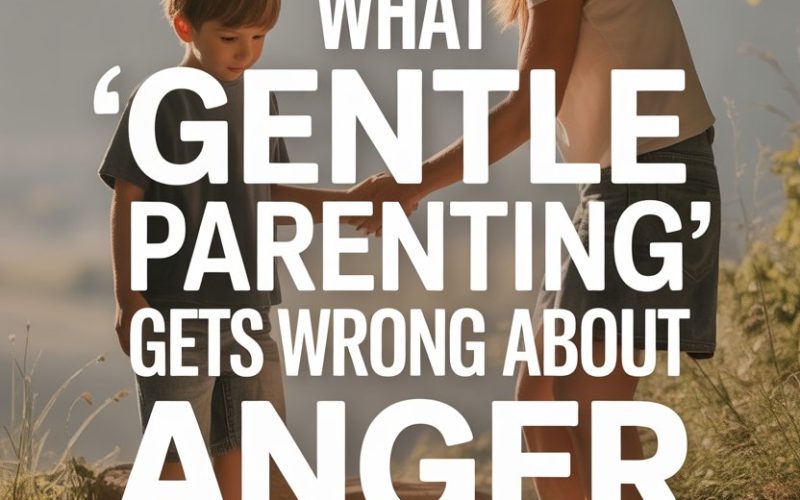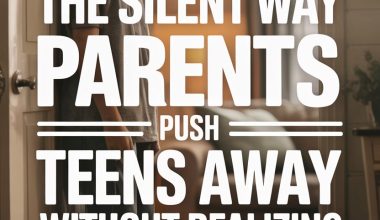Parenting is a bit like building Ikea furniture: the instructions are confusing, the pieces don’t seem to fit, and at some point, you’re convinced someone’s going to lose a toe.
Gentle parenting promises a smoother ride. Less yelling, more connection, the theory goes.
But what happens when big, messy emotions—mostly, anger—rear their heads?
Has gentle parenting painted itself into a corner when it comes to rage, frustration, and that glorious urge to scream into a pillow while your child argues about the color of an onion?
Let’s get real about anger, gentle parenting, and where the two keep missing each other.
The Myth That Anger Is the Enemy
Somewhere along the way, gentle parenting got translated as “never raise your voice and never get mad.”
The result? A generation of parents clenching their jaws, whisper-screaming in the pantry, convinced they’re failing every time their blood pressure so much as ticks upward.
The problem isn’t that gentle parenting values calm. It’s that in the quest for perpetual peace, anger is treated like an intruder, not a tenant with a right to be there.
Anger is a normal, human emotion. Pretending it’s not allowed in your living room is about as effective as banning sand from the beach.
Suppressing anger doesn’t make it disappear.
According to mental health researchers at Harvard, stuffing it down can lead to outbursts, anxiety, or—my personal favorite—a general sense of simmering resentment that erupts the moment your child spills juice on the dog.
Kids Need a Model, Not a Martyr
Ever tried to “keep it together” in front of your kids, only to later find yourself losing it over something small, like a single sock left on the landing? Welcome to the club.
Gentle parenting often gets confused with self-erasure: the parent who never cracks, never snaps, never admits to having a bad day.
But children don’t need flawless parents. They need adults who show them what to do with big feelings.
Research from the University of Cambridge shows kids mirror their caregivers’ emotional regulation.
If they only ever see you acting like a serene Zen master, they won’t know what to do with their own anger—other than feel guilty about it.
Demonstrating healthy anger—naming it, owning it, even apologizing when it spills over—is a lesson in humanity. It teaches kids that feelings aren’t dangerous, and that repair is always possible.
The Silent Pressure Cooker Effect
Biting your tongue every time your child hurls spaghetti at the wall doesn’t make you a saint. It makes you a pressure cooker. And, as every home chef knows, pressure cookers have a way of blowing their lids.
Gentle parenting advice often skips the part where parents need their own outlets for anger. You can’t pour from an empty cup, nor can you parent peacefully with a head full of unspoken fury.
Try sneaking in a minute or two to vent—text a mate, mutter to yourself in the car, or scribble angry notes in a journal. The release is necessary.
According to the American Psychological Association, finding safe ways to acknowledge and express anger reduces the risk of explosions that leave everyone picking emotional shrapnel out of the curtains.
Anger Is Not the Opposite of Connection
One of the big misunderstandings is that anger means disconnection. But anger, just like laughter (or a shared groan over a toddler’s epic meltdown), is a deeply human way to connect—if handled well.
Expressing anger constructively actually builds trust and intimacy. Your child learns that even when things get stormy, you don’t vanish.
You’re there, feeling, talking, repairing. This process is called “rupture and repair,” and it’s at the heart of secure attachment, according to child development experts.
Try this tonight: When you feel frustration rising, narrate it in a way your child can understand. “I’m feeling very upset right now because I’ve asked for shoes on three times and they’re still on the kitchen table. I need a minute to calm down.”
This doesn’t create fear; it creates understanding.
When Gentle Becomes Passive-Aggressive
There’s nothing gentle about a parent frothing with suppressed rage, communicating only in tight-lipped “I’m not angry, I’m just disappointed” statements.
Here’s the thing: kids are emotional detectives. They sense the tension even when you’re smiling through gritted teeth. Passive aggression confuses them, and it’s not a skill worth modeling.
According to parenting psychologist Dr. Laura Markham, unspoken anger often leads to anxiety in children, who know something’s wrong but can’t put their finger on it.
Swapping gentle suppression for honest, direct communication keeps your home free of that confusing emotional fog.
Gentle Parenting Doesn’t Mean Gentle Self-Talk
The term “gentle” sometimes gets misapplied. Suddenly, the expectation isn’t just about how you treat your child—it’s about how you treat yourself.
The unspoken rule becomes: never get angry, or you’re a bad parent.
The self-berating internal monologue (“Why can’t I be more patient? How do those Instagram mums do it? Maybe I’m just not cut out for this?”) helps no one.
Guilt and shame aren’t ingredients for better parenting; they’re just fuel for the next angry outburst.
Practice extending some of that gentleness to yourself. Remind yourself that you’re learning, that anger is information, not a character flaw.
And, if all else fails, remember: even Mary Poppins probably snapped at the Banks children off-camera.
Repairing After Anger Is the Secret Sauce
Here’s where gentle parenting often gets it just right: repair. The real gold is not in never getting mad, but in what you do after you do.
Apologising to your child when you lose your cool (“I got really angry earlier. I’m sorry I shouted. I love you.
Next time, I’ll try to talk about how I feel instead.”) is powerful. It models accountability, humility, and the reassurance that love is bigger than any single storm.
Research from parenting education specialists shows that children who experience honest repair grow up more resilient and secure.
Feeling nervous about apologising? Try writing it down, or saying it at bedtime—kids are often more receptive in the safety of the dark, when the day’s chaos has faded.
Practical Ways to Make Space for Anger
Ready for something you can actually try, even when you’re sleep-deprived and running on cold tea? Here are a few actionable tweaks:
- Label your own anger out loud in simple words: “Mum’s having a big feeling right now. I need a second.”
- Give yourself permission to pause—step into another room, splash your face, or, if you’re British, make a cup of tea with unnecessary force.
- Create a family “anger plan.” Maybe it’s a code word, or a special chair, or just an agreement that it’s okay to say, “I’m mad and need space.”
- Show your child what calming down looks like—deep breaths, shaking out your hands, or even a silly “anger dance.”
- Celebrate repairing after a blow-up. “We had a tough morning, but we sorted it out. That’s what families do.”
When to Seek Extra Help
Everyone has moments where their anger feels too big for the room.
If you’re finding yourself constantly on edge, yelling more than talking, or feeling frightened by the intensity of your emotions, you’re not alone—and you’re not failing.
Therapists, parenting groups, and even a good GP can offer support. The National Health Service has resources for managing anger and finding help when it starts to spill everywhere.
Asking for help is an act of love—towards your child, and yourself.
The Gentle Truth About Anger
Gentle parenting gets so many things right: respect, connection, the belief that children are small humans with big feelings. But it gets anger wrong when it pretends that peaceful parenting means pretending you’re never furious.
Anger isn’t the enemy. It’s a signpost, a natural part of being human, and—handled with honesty and repair—a tool for deeper connection.
Your kids don’t need a saint. They need you: messy, flawed, feeling, and willing to show them how to handle all of it.
Now, where’s that cup of tea?





